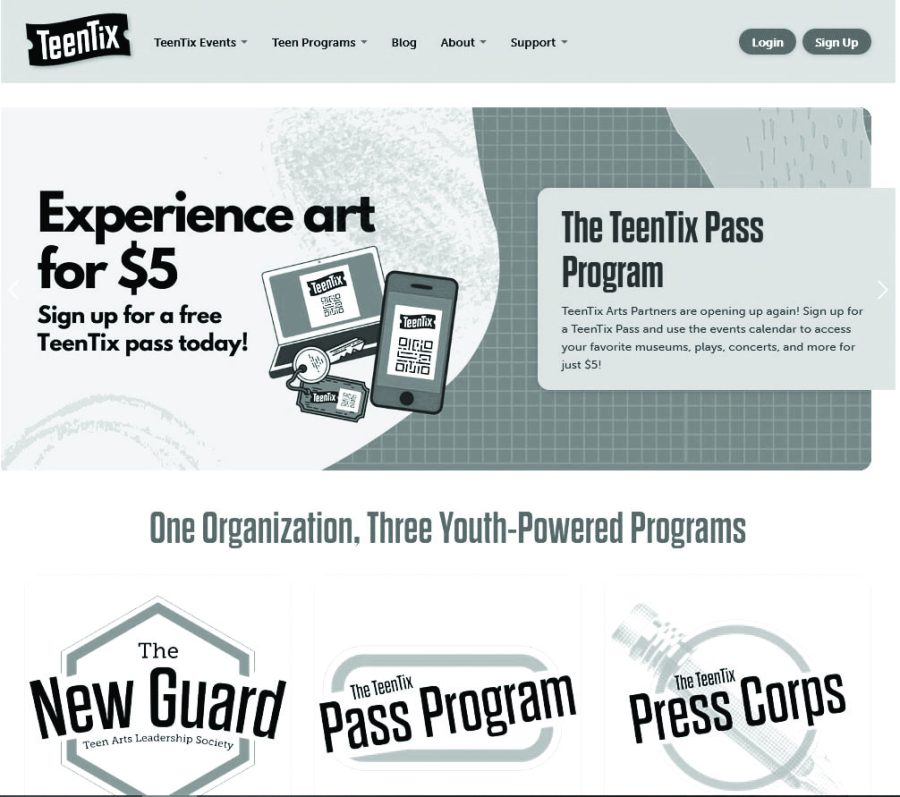A Look Into TeenTix From an Editor
The second article I wrote for Tatler was a movie review. In the three years since that piece cruised onto print, I’ve only grown in my appreciation for the arts, mainly nourished by a particular organization: TeenTix, specifically the teen-led and teen-written Newsroom.
TeenTix is a local Seattle arts organization meant to “break down the barriers that prevent teens from accessing art in our community.” Its resources include a calendar by which teens can easily find arts events in the region (sound familiar?), a pass system that reduces all ticket costs for its dozens of partner organizations to $5 or less, and various other ways to partake in the arts. One of these methods, of course, is the TeenTix Newsroom, where teens can apply to become writers or editors of the blog, writing reviews of local events for a $20 stipend or editing/curating for a $50 monthly stipend.
There are various intricacies within TeenTix that aren’t readily apparent. And with my last month of many on the Newsroom fast approaching, I thought it would serve well to open a window into the inner workings of the TeenTix Newsroom.
Of the three years I’ve been on the Newsroom, I spent two as a writer, which is relatively simple: once you apply and presumably get accepted, you respond to mandatory emails and write up to one review per month by throwing your hat into the ring (responding to editors’ reviewing opportunity emails by saying why you want to write the review and why you’re a good writer for it). If chosen, the editor sets up tickets that work for both of you (and a plus one if wanted), and you go to the event, write a draft, and edit before it’s sent off to the press (the blog). A few business days later, a $20 check arrives at your front door.
There are hiccups, of course, like the minutiae of formatting and the fact that you need to know how to write a balanced review. That said, the process is relatively simple — you shoot off an email, see a local event, and write a review — a quality I greatly appreciated in the throes of my sophomore and junior years.
The same cannot be said for editing.
There’s a reason why TeenTix Newsroom editors get a fixed stipend. Even when there’s no reviewing to edit — especially when there’s no reviewing to edit — there’s always something to do.
To start, the opportunities that writers can take up are entirely curated by editors. Each of the six chooses one event per month out of dozens of events by partner organizations such as the Seattle Symphony, Seattle Opera, Pacific Northwest Ballet, and the Seattle Art Museum. Once these events are chosen, they are emailed out, and we wait and pray that at least one of the two dozen writers is interested enough to respond. Then, when (inevitably) nobody responds, we send out a reminder email subtly conveying our desperation, then when nobody responds, trash the original plan and just add another review to do for the next month. Yes, that problem is specific to me, but shush.
Once (if) we get a writer onboard, we organize the tickets, decide on an editorial timeline, set up the Google Doc for the review, and edit the piece. Simple as that. In theory, providing that the writer stays responsive and partner organization communicative. A partner editor also copyedits.
There are also a series of administrative duties: cleaning the shared inbox, writing monthly editorials, tending to pitches (by writers and those outside TeenTix), organizing the quarterly Newsroom meetings (at the Downtown School, no less), and analyzing applications for prospective writers and employees. More often, editors spend their time on these tasks than directly facilitating reviews, but all are necessary gears to tune to allow the whole machine to run effectively.
TeenTix is a wonderful organization, whether you are involved simply to use its resources and discounts or to further apply yourself to the Seattle art scene. The potential benefits are limitless for those that opt for the latter: you get out of it what you put in. I’d never have my appreciation for the Seattle arts scene (or knowledge about theater entirely) if not for the various opportunities TeenTix offered me. There’s no reason not to get involved if you’re even somewhat interested in the arts, and I’d recommend writing in it to anyone.
You can take the woman out of the bird, but you can't take the bird out of the woman: meet Yoon Lee.

